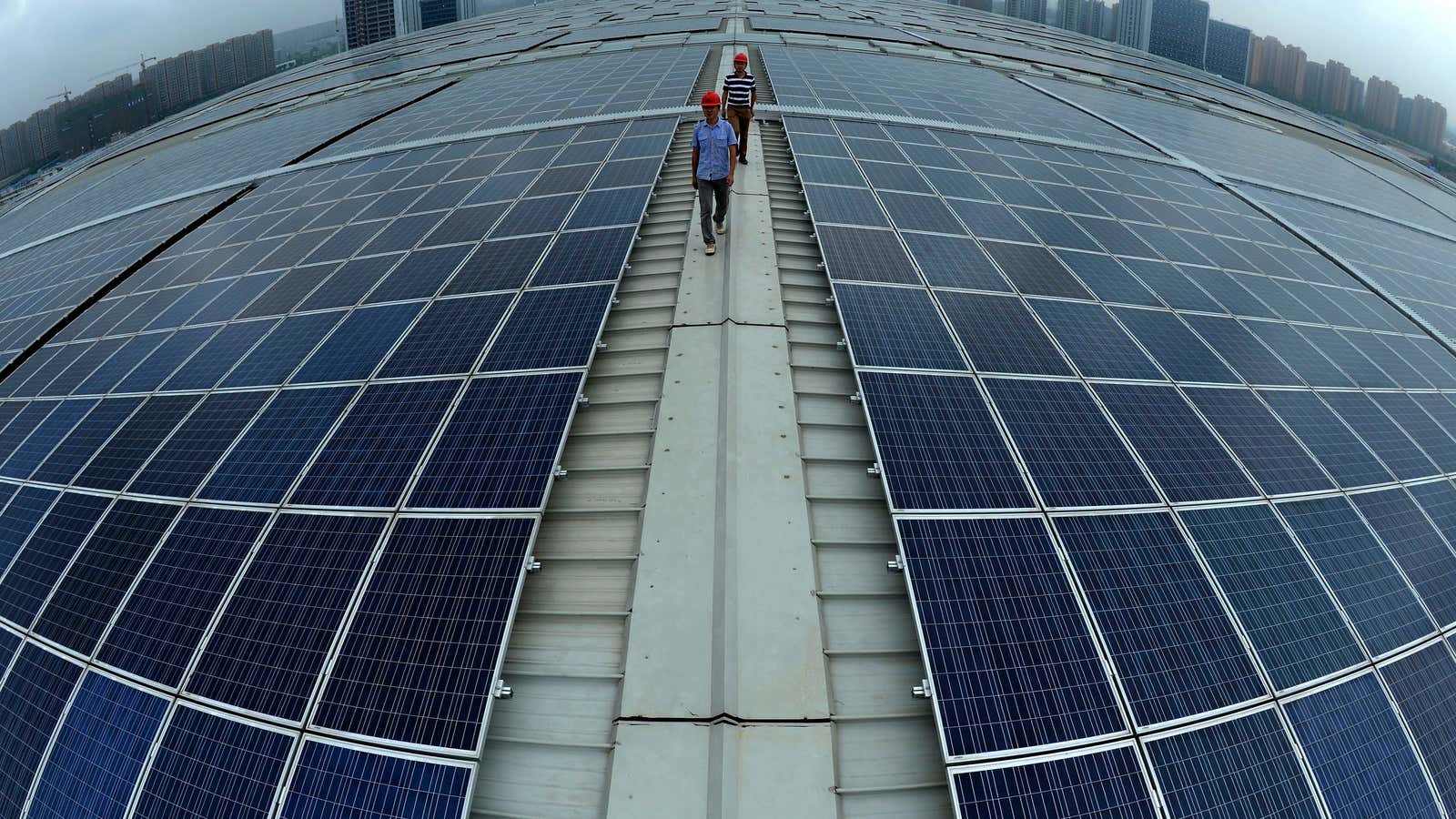Just how explosive has the growth of solar energy been over the past 15 years? Consider this: In 1998, back when Bill Clinton was in the White House, Larry Page and Sergey Brin were tinkering with a new kind of search engine, and Steve Jobs still had a more-or-less full head of hair, there was a grand total of 34 photovoltaic installations connected to the power grid in the US. Those solar panels produced 200 kilowatts, or about a fifth of the electricity generated on the roof of your typical IKEA store these days.
By 2012, the number of solar installations had jumped to more than 200,000, producing 7,200 megawatts, according to an annual report released today by the Lawrence Berkeley National Laboratory that tracks photovoltaic power prices in the US. The review is based on prices paid for 208,719 solar installations.
If you were on the renewable energy cutting edge back in ’98, you paid about $12 a watt (in 2012 dollars) for an installed rooftop solar system. By 2012 that cost had fallen to $5.3 a watt for systems smaller than 10 kilowatts. Installed prices fell 13% in 2012 alone and in the first six months of this year have dropped another 10% to 15% in California, according to the report. (Installed costs represent the total price of a solar system, including the panels, permits and labor.)
Still, US solar prices are high compared to those in other countries. An installed solar system in Germany, for instance, cost half the US price in 2012, while one in Australia was 41% cheaper.
Given that all these countries get most of their solar panels from the same source—China—the differences in price mainly come down to so-called “soft” costs such as labor, installation, and the time and money it takes to secure permits. Such costs can account for more than half the price of a solar system.
“A typical [solar] permitting process in the United States may involve many local government departmental reviews—such as building, electrical, mechanical, plumbing, fire, structural, zoning, and aesthetic reviews—as well as a permitting fee,” found an April 2013 study by the Lawrence Berkeley National Laboratory, which noted there are 18,000 local jurisdictions in the US.
While solar panel prices are likely to fall further thanks to technological advances and economies of scale, much of the focus these days is cutting those soft costs, which can add thousands of dollars to the cost of a solar system. Which is why last week nine cities in the San Francisco Bay Area announced they would begin to use a common fast-track permitting system that could cut the cost of a rooftop system by as much as $3,500.
But California still needs to catch up to France, where it’s 10% cheaper to put solar panels on your château. Yes, when it comes to solar power, the US is more bureaucratic even than the French.
